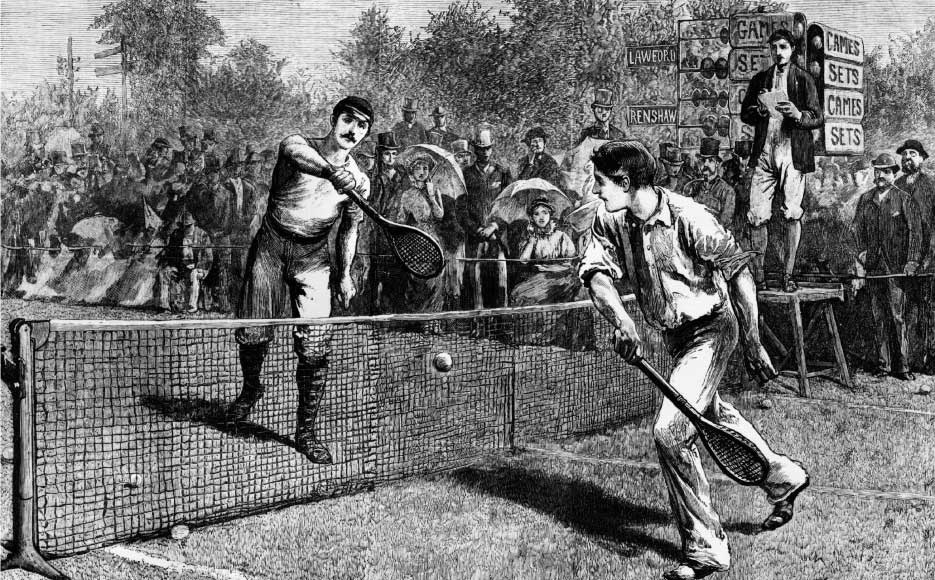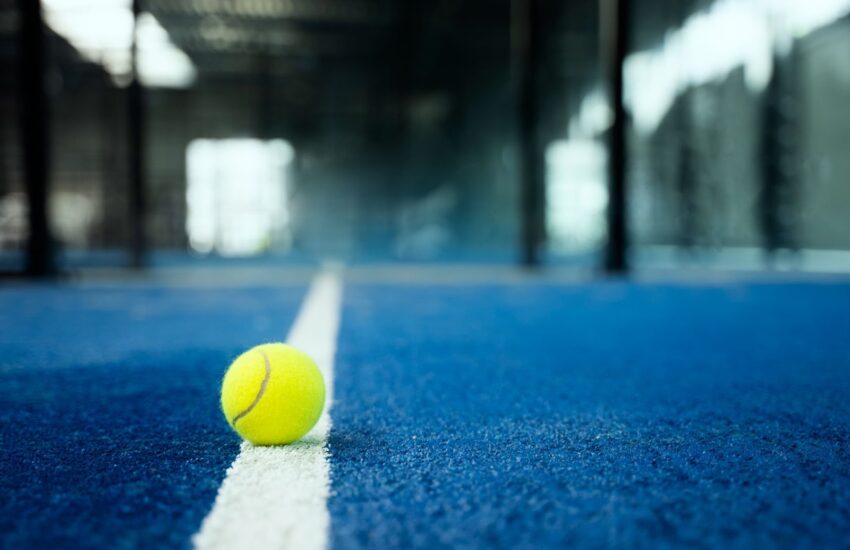The History of Tennis: From Origins to the Present Day
Tennis is not just a sport; it is an art that requires endurance, agility, and strategy from its players. With a rich history that spans from ancient times to the present day, tennis attracts millions of fans worldwide. The Origins of Tennis The earliest mentions of tennis can be traced back to ancient Egypt, where people played a game resembling modern tennis.
However, the true origins of tennis lie in Europe during the Middle Ages. In the 12th century, France saw the emergence of a game called “jeu de paume,” which translates to “game of the palm.” Players struck a ball with their hands, and later, wooden rackets were introduced. As the game evolved, by the 16th century in England, players began using rubber balls and rackets with strings. This period is considered the birth of modern tennis, although the game was quite different from what we know today. The Evolution of Tennis In the 19th century, tennis gained immense popularity among the aristocracy. The sport’s rules were standardized in 1874 by Major Walter Clopton Wingfield, who patented the game and named it “lawn tennis.”
This version of tennis quickly spread across Europe and the United States. The first Wimbledon tournament, which is now one of the most prestigious tennis events, was held in 1877. Wimbledon is unique for its grass courts and long-standing traditions, such as the all-white dress code and the presence of the Royal Family. Major Tennis Tournaments Today, tennis is celebrated through various major tournaments known as Grand Slams. These include the Australian Open, French Open, Wimbledon, and the US Open. Each tournament has its unique characteristics and charm. Australian Open: Held in Melbourne, this tournament is known for its hard courts and intense summer heat. It marks the beginning of the Grand Slam calendar each year. French Open: Played on the red clay courts of Roland Garros in Paris, the French Open is famous for its challenging surface, which requires exceptional skill and stamina from players.
Wimbledon: As the oldest tennis tournament, Wimbledon is steeped in tradition. Played on grass courts, it is renowned for its historic significance and the high-profile matches it hosts. US Open: Held in New York City, the US Open is known for its vibrant atmosphere and hard courts. The tournament concludes the Grand Slam season and is a favorite among fans for its energetic and lively environment. Tennis Today Modern tennis continues to evolve with advancements in technology and training. The sport has seen legends like Roger Federer, Rafael Nadal, and Serena Williams, who have set remarkable records and inspired new generations of players.
The popularity of tennis remains strong, with millions of fans worldwide eagerly following the major tournaments and local matches alike. In conclusion, tennis has a rich and storied history that has shaped it into the beloved sport it is today. Whether played on grass, clay, or hard courts, the game continues to captivate audiences with its blend of physical prowess and strategic brilliance. As tennis moves forward, it remains a testament to the enduring appeal of athletic competition and the spirit of the sport. In the world of tennis, the importance of traditions and the evolution of the game are reflected in every match. Players strive to leave their mark, aiming for the golden crown of victory, symbolizing their place in the storied history of this remarkable sport.
The Evolution of Tennis Equipment and Techniques
Advancements in Tennis Equipment
The evolution of tennis equipment has played a significant role in transforming the sport from its early days to the present. The initial wooden rackets have been replaced by advanced materials that enhance performance and durability. Today, rackets are made from graphite, carbon fiber, and other composite materials, making them lighter and more powerful.
The design of tennis balls has also evolved. Originally made from cloth and stuffed with wool or hair, modern tennis balls are constructed with a hollow rubber core and a felt covering. This change has contributed to the consistency and speed of the game, allowing for a more dynamic style of play.
Footwear specifically designed for tennis has also seen significant improvements. Modern tennis shoes provide better grip, support, and durability, helping players to move swiftly and reduce the risk of injury. Advances in shoe technology cater to different court surfaces, ensuring optimal performance whether on grass, clay, or hard courts.
Innovations in Training and Techniques
Training methods and techniques in tennis have undergone significant changes over the years, driven by advancements in sports science and technology. Modern training regimens incorporate a holistic approach, emphasizing not only physical conditioning but also mental preparation and strategic planning.
High-tech training aids, such as ball machines and video analysis tools, allow players to practice specific shots and analyze their performance in detail. Coaches use these tools to identify areas for improvement and to develop personalized training programs that address the unique needs of each player.
Biomechanical analysis has become a crucial component of training, helping players optimize their movements to maximize efficiency and minimize the risk of injury. This scientific approach to training has enabled players to enhance their techniques, improve their endurance, and perform at their peak levels.
The Impact of Technology on the Game
Technology has significantly impacted the way tennis is played and viewed. The introduction of electronic line-calling systems, such as Hawk-Eye, has improved the accuracy of officiating and reduced disputes over close calls. This technology provides players and fans with real-time visual representations of the ball’s trajectory, adding a new dimension to the spectator experience.
Wearable technology, such as fitness trackers and smartwatches, allows players to monitor their physical condition in real-time. These devices track metrics like heart rate, movement, and calories burned, providing valuable data that can be used to adjust training and recovery protocols.
Broadcasting innovations have also enhanced the viewing experience for tennis fans. High-definition cameras, slow-motion replays, and detailed statistical analyses bring the excitement of the game to life, allowing viewers to appreciate the nuances of each match.
The Globalization of Tennis
Tennis has grown into a truly global sport, with players from all corners of the world competing at the highest levels. The sport’s international appeal is reflected in the diversity of its top players, who come from countries with rich tennis traditions as well as emerging tennis nations.
Global tournaments and tours have made tennis more accessible to fans worldwide. The ATP and WTA tours feature events in numerous countries, allowing fans to witness world-class tennis in their home regions. This globalization has contributed to the sport’s popularity and has inspired many young athletes to pursue tennis professionally.
The Role of Sponsorships and Media
Sponsorships and media coverage have played a pivotal role in the commercialization and popularization of tennis. Major brands sponsor tournaments, players, and teams, providing financial support that helps to grow the sport. These sponsorships often lead to innovative marketing campaigns that further elevate the profile of tennis.
Media coverage, both traditional and digital, has brought tennis to a broader audience. Television broadcasts, live streaming, and social media platforms provide extensive coverage of matches, player interviews, and behind-the-scenes content. This comprehensive coverage keeps fans engaged and informed, contributing to the sport’s vibrant community.
Future Trends in Tennis
Looking ahead, tennis is poised to continue evolving with emerging technologies and trends. Virtual reality (VR) and augmented reality (AR) could revolutionize the way fans experience the game, offering immersive viewing experiences and interactive training simulations. Advances in artificial intelligence (AI) may lead to new coaching tools that provide real-time strategic advice based on data analytics.
Sustainability is also becoming an important consideration in tennis, with efforts to reduce the environmental impact of tournaments and equipment manufacturing. Initiatives such as eco-friendly tennis balls and carbon-neutral events are gaining traction, reflecting the sport’s commitment to environmental responsibility.



